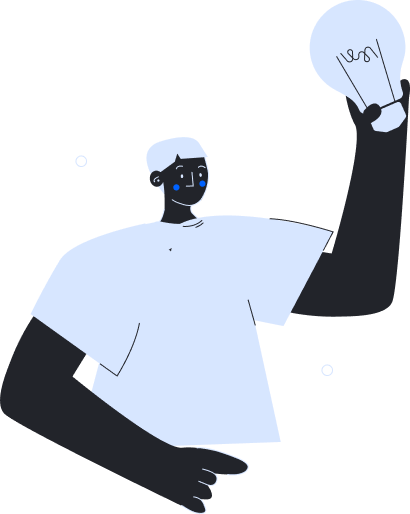Artist Name Generator
Your artist name is a pivotal part of your expression, acting as a bridge between you and your audience. An impactful name can stir emotions, ignite curiosity, and leave a lasting impression. However, crafting an artist name that encapsulates your unique identity and resonates with your audience can be tricky. An ineffective name risks your artistry blending into the crowd and may limit your reach.
To counter this, BrandSnag's Artist Name Generator helps you in creating a name that reflects your creative journey and connects with your audience, supporting you in establishing a distinctive and memorable identity.
Why a Good Artist Name Matters

An artist's name acts as a bridge between you and your audience, connecting your creative persona to the world. It has the power to paint a vivid image of your artistry in your audience's minds before they even experience your work. It can set the tone and expectations for your audience, influencing how they perceive your art.
An artist name is also a marketing tool that can aid your visibility in the competitive art world. A memorable and unique name can be a game-changer, setting you apart from other artists and making your work identifiable and easily searchable across various platforms.

Crafting Your Artist Name: Best Practices
- Know Your Message and AudienceYour artist name should reflect the core message of your work. This message is what you intend to communicate through your art, your values, or your perspective. Understanding your target audience is equally vital. An artist's name that resonates with your target audience would be more effective. For instance, if your target audience is millennials, an artist name that speaks their language and connects with their experiences could be a great hit.
- Scope Out the CompetitionBefore settling for an artist name, examine what's already out there. Check the names of successful artists in your niche to identify patterns, styles, and trends. This exploration can inspire you and also help you avoid a name that might be too similar to another artist, ensuring your name stands out.
- Importance of Adjectives in Your Artist NameThe selection of adjectives is a significant step in forming your artist name. Adjectives are descriptors that can imbue your artist name with a specific tone, giving your audience a taste of your artistic flavor. Choosing the right adjectives can paint a picture of your artistry, giving your audience an insight into what to expect from your work.
- Embody Your Artistic PersonalityYour artist name should reflect who you are as an artist. Think about your style, the themes you explore, and your artistic values. Your name should give an indication of your creative persona and align with the nature of your art.
- Be Unique and MemorableYour artist name should stand out in the crowd. Aim for a name that is original and memorable, one that sticks in the minds of your audience long after they encounter your work.
- Keep It SimpleWhile uniqueness is important, your artist name should also be straightforward and easy to understand. It should be easy to spell, pronounce, and remember. Avoid complicated words or unusual spellings that may confuse your audience or make it difficult for them to find your work.
- Consider Online AvailabilityIn the digital age, it's crucial to ensure that your artist name is available online. Check if the name you have in mind is available as a domain name for a website and on social media platforms. Having a consistent name across platforms can help boost your online presence and make it easier for your audience to find and engage with you.
- Plan for the FutureYour artist name isn't just for the present; it's also for the future. As your art evolves, your artist name should remain relevant. A timeless name that can gracefully age with your art and remain significant through different stages of your career is desirable.
- Get Feedback and Brand Your ArtBefore finalizing your artist name, gather opinions. Feedback from friends, family, and potential audience members can provide valuable insights. Finally, remember to incorporate your artist name into your branding efforts, including your logo design and website.
- Legal ConsiderationsBefore finalizing your artist name, do some legal research. Ensure your chosen name isn't already trademarked or copyrighted by another artist. Infringing on another artist's name can lead to legal issues and confuse your audience.
Artist Names and Their Stories

Throughout history, many artists have chosen names that leave an indelible mark on their audience's minds. The stories behind these names often provide fascinating insights into the artists' creative identities and their journey toward crafting their unique public personas. Let's explore a few more examples.
Group Names
Creating a group artist name presents a unique challenge - it has to collectively represent the individuals involved while still reflecting their shared vision. For example, The Beatles, a band that needs no introduction, picked their name as a homage to Buddy Holly's band, The Crickets. They replaced 'Crickets' with 'Beatles' to incorporate 'beat music,' a popular genre at the time, showcasing their shared passion and their music style.
In a different vein, the band Coldplay was initially named 'Starfish.' However, they opted to change it to 'Coldplay' after another band in their circuit decided not to use it. This name, inspired by a book of poetry, signaled their desire for a unique and evocative identity that would stand out in the music industry.
From Pseudonyms to Real Names
The path from pseudonyms to real names can often symbolize an artist's journey towards personal growth and authenticity. For instance, rapper Sean Combs has gone through several stage names, including Puff Daddy, P. Diddy, and Diddy, before finally deciding to use his real name in his artistic endeavors.
Similarly, singer-songwriter Alicia Keys, born Alicia Cook, chose 'Keys' as a metaphor for opening doors and unlocking potential - a theme often present in her music. However, as she evolved as an artist, she began to use her real name more prominently, representing her growing authenticity and personal connection to her work.
Name Changes
Artists sometimes change their names to reflect their artistic evolution, new directions, or significant life events. Consider the iconic musician Prince, born Prince Rogers Nelson. During a dispute with his record label, Warner Bros. Records, he famously changed his name to an unpronounceable symbol, often referred to as the 'Love Symbol.' This move, while unconventional, represented his fight for artistic freedom.
The evolution of artist names is not limited to musicians. Renowned author Joanne Rowling is known by her pen name, J.K. Rowling. The 'K' stands for 'Kathleen,' her paternal grandmother's name. It was added at her publisher's request, who thought a book by an obviously female author might not appeal to the target audience of young boys. As Rowling ventured into writing adult crime novels, she adopted the pseudonym Robert Galbraith to separate this new work from her previous writings.

Should You Choose Your Real Name or a Pseudonym for an Artist Name?

One of the pivotal decisions to make when deciding on an artist name is whether to use your real name or choose a pseudonym. This decision can be influenced by various factors and can significantly impact your public image and private life.
Choosing Your Real Name
Choosing your real name as your artist name can be a compelling choice, especially if you wish to create a strong link between your personal identity and your art. It can bring a level of authenticity and personal connection to your work, allowing your audience to connect with you on a more personal level.
Artists who use their real names often aim to blur the lines between their personal life and artistic persona, indicating a level of openness about their personal experiences and feelings. This can create a sense of transparency and trust with the audience.
Consider artists like Michael Jackson, Kanye West, Paul McCartney, Diana Ross, and Mariah Carey, who all chose their real names as their stage names. The R&B artist Bernell, previously known as Brandy B., also decided to use her real name as a symbol of personal growth and authenticity.
Adopting a Pseudonym
Alternatively, adopting a pseudonym as an artist name allows you to create a distinct artistic identity separate from your personal life. This can provide a protective shield, maintaining a degree of privacy and separation between your public persona and private life.
A pseudonym can also allow for greater creativity and flexibility, allowing you to create an artist name that perfectly encapsulates the image or brand you want to portray. Some artists choose pseudonyms that are intriguing, memorable, and aligned with the tone of their work.
Consider the famous musicians such as Bun B, Jay-Z, Flo Rida, André 3000, and Bruno Mars who all use pseudonyms. Artists from other fields have also chosen this path. For example, Mark Twain, the renowned author, was actually Samuel Clemens, while the celebrated actor Sir Michael Caine was born Maurice Joseph Micklewhite Jr.
Balancing Act
Regardless of the choice you make, it's crucial to maintain a balance between your professional persona and personal identity. The choice between a real name and a pseudonym isn't a binary one. Many artists find a middle ground, altering their real names or using parts of them to create unique artist names.
As an example, Stefani Germanotta chose the pseudonym Lady Gaga, a name with a nod to Queen's song "Radio Ga Ga." Drake, whose real name is Aubrey Graham, chose a stage name that carries part of his real name. This way, these artists have managed to create distinctive stage names while still retaining elements of their real identities.
In the end, the decision to use your real name or a pseudonym should reflect your artistic goals, personal comfort, and the image you wish to project to your audience. Remember, the name you choose will be a significant part of your journey as an artist, so make it count!

Checklist for Artist Name Ideas
- Starting with your actual name, nicknames, or family names
- Using prefixes, suffixes, or initials
- Descriptive names reflecting your music
- Reflects your style and personality
- Simple, easy to pronounce and spell
- Understandable across languages and cultures
- Not already in use by another artist
- Avoid copyrighted or trademarked words
150 Artist Name Ideas

10 Music Artist Name Ideas
- Melodic Soul
- Rhythmic Eclipse
- Sonic Harmony
- Vibrant Cadence
- Celestial Notes
- Dynamic Pulse
- Soundwave Saga
- Acoustic Aura
- Symphony Serenity
- Euphonic Odyssey
10 Makeup Artist Name Ideas
- Beauty Canvas
- Glamour Palette
- Lush Tints
- Color Elixir
- Radiant Brush
- Shimmer Maven
- Contour Couture
- Chroma Chic
- Posh Pigments
- Velvet Vanity
10 Female Artist Name Ideas
- Stella Seraphic
- Harmony Haven
- Aurora Echo
- Melody Muse
- Luna Lyric
- Celestial Charm
- Serene Siren
- Iris Illusion
- Mystic Marigold
- Sapphire Symphony
10 Male Artist Name Ideas
- Sonic Spartan
- Rhythm Rover
- Melodic Maverick
- Harmonic Hercules
- Cadence Captain
- Symphony Sentinel
- Riff Ranger
- Pulse Phantom
- Note Nomad
- Echo Explorer
10 Artist Website Name Ideas
- CreativeCosmos.com
- ArtisticAxis.com
- ChromaticCanvas.com
- BrushstrokeBoulevard.com
- PaletteParadise.com
- SketchbookSanctuary.com
- HarmonyHaven.com
- MuseMetropolis.com
- EaselEmpire.com
- CanvasConstellation.com
10 Tattoo Artist Name Ideas
- Inking Infinity
- Etched Elegance
- Perennial Pencil
- Skin Storyteller
- Vibrant Vellum
- Shadow Stencil
- Permanent Palette
- Indelible Impressions
- Chromatic Carvings
- Tantalizing Tattooist
10 Cool Artist Name Ideas
- Sonic Spectrum
- Echo Enigma
- Fusion Frequency
- Rhythm Radiance
- Cadence Cosmos
- Melodic Mirage
- Soundwave Symphony
- Acoustic Anomaly
- Harmonic Helix
- Pulse Paradox
10 Hip Hop Artist Name Ideas
- Rhyme Rebel
- Beats Baron
- Rhythm Renegade
- Flow Freeman
- Cadence Conqueror
- Verse Vanguard
- Sonic Sovereign
- Lyric Legionnaire
- Tempo Titan
- Melody Monarch
10 Artist Name Ideas for Instagram
- @ColorfulCreations
- @ArtisticAlchemy
- @CreativeCanvas
- @PaintPalettePassion
- @SketchbookStories
- @BrushstrokeBreeze
- @EaselEpiphanies
- @MuseMajesty
- @CanvasChronicles
- @InkInspirations
10 Artist Collection Name Ideas
- Ethereal Echos
- Melodic Mosaics
- Serene Sonatas
- Harmonic Hues
- Cadence Collage
- Rhythmic Radiance
- Sonic Spectrum
- Soundwave Symphony
- Acoustic Array
- Pulse Panorama
10 Rap Artist Name Ideas
- Rhyme Raptor
- Beat Bender
- Verse Vanguard
- Flow Fathom
- Cadence Catalyst
- Lyric Luminary
- Sonic Shaman
- Tempo Tactician
- Melody Maestro
- Rhythm Rogue
10 Solo Artist Name Ideas
- OneBeat
- Solo Symphony
- Lone Lyric
- Solo Sonnet
- OneNote Wonder
- Solo Soundwave
- Melody Monarch
- Rhythm Royal
- Cadence King
- Pulse Prince
10 R&B Artist Name Ideas
- Soulful Serenity
- Rhythm Radiance
- Blues Bliss
- Melody Mirage
- Harmony Haven
- Soul Soothe
- Pulse Paradise
- Beat Balm
- Tempo Tranquility
- Cadence Comfort
10 Funny Artist Name Ideas
- BeatsByVanGogh
- PaintbrushPirate
- EaselEntertainer
- PalettePrankster
- CanvasComedian
- SketchbookSilly
- BrushstrokeBuffoon
- ChromaticClown
- ArtisticAntics
- InkIngenious
10 Great Artist Name Ideas
- Symphony Sage
- Harmonic Hero
- Sonic Savant
- Rhythm Rainmaker
- Cadence Champion
- Melody Maestro
- Pulse Prodigy
- Echo Elite
- Beat Baron
- Note Nobleman

Artist Name Generator FAQs

How Do I Use BrandSnag's Artist Name Generator?
The Artist Name Generator from BrandSnag is easy to use. Simply enter some keywords related to your artistry and click Generate. The generator will then generate a range of artist name suggestions for you to consider.
Is BrandSnag's Artist Name Generator Free to Use?
Absolutely! BrandSnag's Artist Name Generator is free to use. You can generate as many artist name ideas as you want without any restrictions.
Can I Use BrandSnag's Artist Name Generator's Names Anywhere?
Yes, you can. All the names generated by BrandSnag's Artist Name Generator are available to be used anywhere, including for your social media handles and website domain name.
Is There a Limit on How Many Ideas I Can Generate?
No, there is no limit to how many ideas you can generate with the Artist Name Generator. You can keep generating names until you find the perfect one for your artist name.
Do I Need to Have Any Special Skills or Knowledge to Use the Artist Name Generator?
No, you don't need any special skills or knowledge to use BrandSnag's Artist Name Generator. All you need is an idea of what kind of artist name you want and the generator will do the rest.
What Is the Purpose of an Artist Name?
An artist name serves as a powerful tool for branding and self-expression. It's how you present yourself to your audience and the world at large. The right artist name can help convey your artistic style, personality, and values, while also making you more memorable to your audience.
Why Should an Artist Name Be Unique?
A unique artist name helps set you apart from other artists in your field. It ensures that when people hear or see your name, they think of you and your work, not someone else's. A distinctive name also tends to be more memorable, aiding in brand recognition and recall.
What Is the Role of Adjectives in Artist Names?
Adjectives in artist names can help set the tone and convey the mood or style of your art. They can add depth and detail to your name, providing additional insight into your artistic persona or the kind of work you create.
Why Is Audience Consideration Crucial in Choosing an Artist Name?
Considering your audience when choosing an artist name is essential because your name is a crucial part of how your audience perceives you. A name that resonates with your audience can help them connect with you and your work on a deeper level. It's also important to ensure your name is easy for your audience to pronounce, spell, and remember.
How Can I Ensure My Artist Name Stays Relevant in the Future?
To ensure your artist name stays relevant in the future, it's helpful to choose a name that's not overly tied to specific trends or periods. Consider your long-term goals and where you see your art evolving. A timeless name that can grow with you as your art evolves is ideal.
Why Should I Seek Feedback on My Artist Name?
Getting feedback on your artist name can provide valuable perspectives and insights that you may not have considered. Others can help identify potential issues, such as unintentional meanings or pronunciation difficulties. Feedback can also help you gauge how memorable and appealing your name is to others.
What Are Some Examples of Artists Changing Their Names?
Many artists have changed their names during their careers. Some examples include Sean Combs (from Puff Daddy to P. Diddy to Diddy), Alicia Keys (from Alicia Cook), and the artist formerly known as Prince who famously changed his name to an unpronounceable symbol.
What Are the Key Considerations When Choosing an Artist Name?
Key considerations when choosing an artist name include reflecting your artistic style and personality, ensuring the name is unique and memorable, keeping it simple and easy to pronounce, considering online availability, testing the name with others, and considering legal aspects such as trademarks and copyrights.
How Can I Brainstorm Ideas for My Artist Name?
There are many ways to brainstorm ideas for your artist name. You can start with your actual name, nicknames, or family names. You could also explore words that describe your art, use elements from your favorite books or movies, or experiment with letters, numbers, or symbols. Tools such as name generators or thesauruses can also be useful.
What Steps Should I Take in Narrowing Down My Artist Name Choices?
When narrowing down your artist name choices, consider factors like simplicity, memorability, and uniqueness. Test potential names with others to get feedback. Check for online availability on social media platforms and as a domain name. Also, do some legal research to ensure your chosen name isn't already trademarked or copyrighted by another artist.
